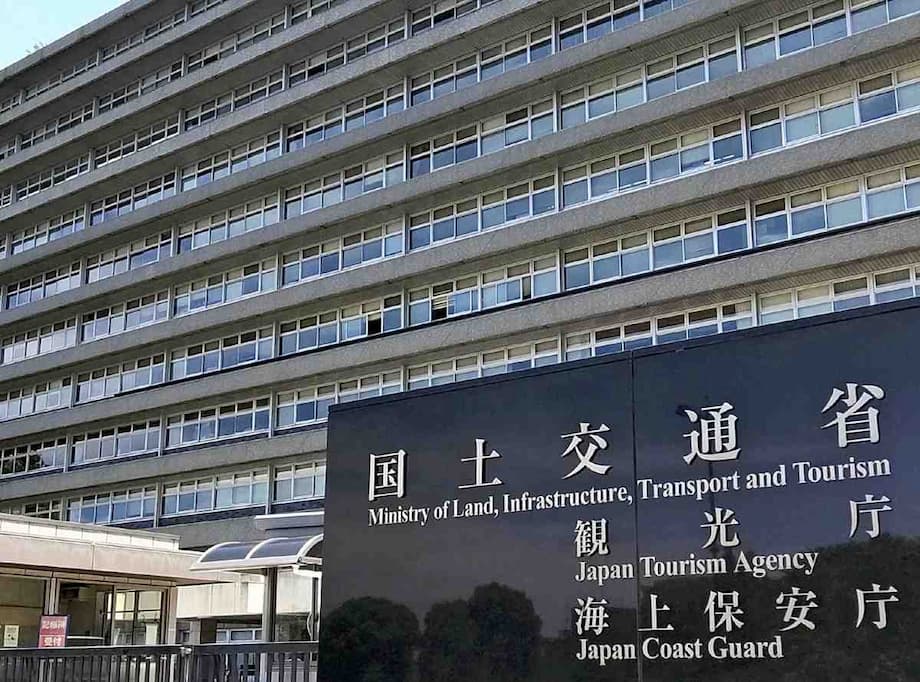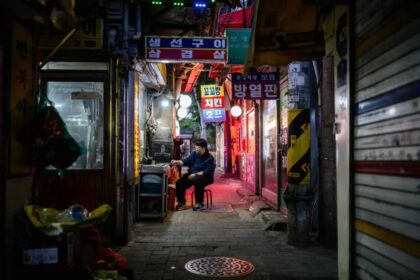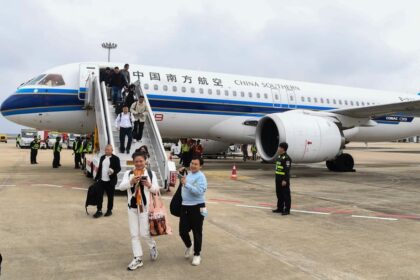Why Japan is subsidizing renovations of soon to be empty homes
Japan will launch a new model project next fiscal year to keep homes from sitting empty in and around major cities. The Ministry of Land, Infrastructure, Transport and Tourism plans to subsidize renovations so that properties, including those expected to be vacated by older residents, can be brought back as family housing or repurposed as childcare centers and other community facilities. Homeowners who plan to relocate or move into elder care will be encouraged to renovate their properties rather than leave them idle. Buyers who acquire vacant homes and commit to renovations can also qualify. The objective is two fold, to slow the rise of empty houses in urban areas and to make it easier for working adults to secure a home at a time of high construction costs.
- Why Japan is subsidizing renovations of soon to be empty homes
- What the model project will pay for and who can apply
- Where the program will focus and why those districts matter
- Akiya explained and how Japan counts vacant homes
- Renovation over new build grows appeal as costs rise
- Can reuse bring services back to aging neighborhoods
- For buyers and owners, what are the practical pros and cons
- What officials say about goals
- How this trend intersects with tourism and small business
- What to watch next
- Highlights
The scale of the challenge is large. Japan had roughly 9 million vacant dwellings in 2023, about 14 percent of all homes. Not all of these are derelict, since some are on the market or used only occasionally. A long neglected subset is growing, however. Government data show a record 3.85 million houses in 2023 that were unoccupied for years and not listed for rent or sale. Empty and deteriorating properties can undermine safety and the appeal of neighborhoods, especially in districts where residents are rapidly aging.
Demographic forecasts point to a sharper shift ahead. Ministry surveys project that the number of houses and apartments occupied only by residents age 85 or older will rise quickly over the next decade. In the Tokyo region (Tokyo and three surrounding prefectures), the count is expected to jump from about 340,000 dwellings in 2023 to about 940,000 in 2033. In the Kansai region centered on Osaka and Kyoto, a similar category is projected to rise from about 210,000 to about 580,000. Many of these homes will likely come onto the market or sit empty as residents move in with relatives or enter care. The new subsidy aims to guide that transition toward renovation rather than abandonment.
What the model project will pay for and who can apply
The program will operate in residential districts in and around major cities that were built during the high growth years from the 1950s through the 1970s. The ministry, working with participating local governments, will select target areas where vacancies are already prevalent or expected to increase. The focus is on neighborhoods that still have strong access to jobs, schools, and transit but face a rising number of older only households.
Eligible applicants include current owners of vacant houses and older homeowners whose properties will likely go empty after they move to a relative’s home or a care facility. People who buy a vacant home in a designated area and renovate it will also be eligible. Subsidies can cover interior and exterior renovations, plumbing repairs, and other necessary work to bring a property back to safe and usable condition. The government expects many of these properties to return to the market as family homes. Others may be reused as childcare centers, community halls, child rearing support facilities, or small workspaces.
The project will run over several years as a pilot, with the goal of expanding to other regions that face similar conditions. The ministry has requested several hundred million yen in the next fiscal year budget to launch the effort. Local governments are expected to set up processes to guide applicants through inspections, permits, and contractor selection.
Where the program will focus and why those districts matter
Many of the targeted neighborhoods began as new towns and large subdivisions built to serve commuters during Japan’s rapid growth. Decades later, the original buyers have aged in place. Children often moved away, schools consolidated, and corner shops closed. The built environment still offers good transit and road access, but the resident mix is older and many houses are oversized for smaller modern households. When a block begins to hollow out, the decline can feed on itself.
Vacant houses can trigger a harmful cycle. Darkened properties make buyers wary and deter routine investment by neighbors. Neglected structures can attract dumping, harbor pests, and become fire risks. In a country that faces frequent earthquakes and heavy storms, unmaintained buildings can also pose safety hazards to nearby residents. Turning empty houses back into active homes or useful facilities helps stabilize streets and keep daily life going.
Why a wave of vacancies is coming
Households made up only of very old residents are growing fast in the urban belts. When owners move to long term care or pass away, the homes they leave behind can sit idle. Insurance and maintenance payments lapse, utilities are shut off, and deterioration accelerates. Ministry projections for Tokyo and Kansai point to a steep rise in such dwellings through 2033. Early action through renovation and sale is less costly than letting stock decay and having to board up or demolish houses later.
Akiya explained and how Japan counts vacant homes
Vacant houses in Japan are commonly called akiya. The national housing survey counts all empty dwellings, including properties for sale, rentals seeking tenants, second homes, and homes empty for other reasons. Within that broad tally, a significant subset has become long empty and inactive in the market. These neglected houses are the focus of many local ordinances and now the target of the new subsidy push in urban areas.
Several structural factors drive the phenomenon. Japan’s population is shrinking and aging. Many heirs live elsewhere and do not wish to inherit old properties that require costly upkeep. Demolition can be expensive, and tax rules sometimes make it cheaper to leave a structure standing even if no one lives in it. The market for old houses is thin because buyers tend to favor new construction, a preference shaped by seismic safety concerns and decades of building practices that prized new over old.
Policy has been shifting to address these issues. The Vacant Houses Special Measures Act allows municipalities to identify dangerous or seriously neglected properties and order repairs or removal. Once a house is designated, local authorities can also remove property tax advantages that otherwise discourage demolition. Reforms that took effect in 2024 made inheritance registration for real estate mandatory, tightening the system to reduce properties lost in unclear ownership and making it easier to contact responsible parties.
Renovation over new build grows appeal as costs rise
High construction costs have made it harder for typical child raising households to buy new homes in city regions. Materials prices, labor shortages, and supply chain delays have all pushed up the price of new builds. By channeling funds into renovation, the government hopes to increase the supply of move in ready houses at price points families can manage.
Renovating existing structures can deliver benefits beyond cost. It brings properties back into use more quickly than a tear down and rebuild, keeps neighborhood character intact, and reduces construction waste. Energy upgrades, better insulation, and modern fixtures can make older houses more efficient and comfortable without starting from scratch.
The model project also supports conversions that reflect local needs. A house that no longer fits a single family could host a small childcare room, after school activities, a parenting support office, or a quiet workspace for remote workers. These kinds of reuse keep foot traffic on the street and bring daily services back within walking distance.
Can reuse bring services back to aging neighborhoods
Japan has piloted neighborhood support systems that connect medical, social, and daily living services close to where people reside. One example from the Tokyo suburbs, often called the Nagayama model of community based integrated care, shows how local government, nonprofits, and businesses can work together to support older residents and sustain neighborhood life. The lesson is that modest facilities, placed in the right spots, can anchor a community.
The new subsidy can help put that idea into practice in city districts facing more vacancies. Converting a share of empty houses into places for childcare, community meetings, and parenting support can shorten commutes for families and keep older neighbors engaged. When residents of different ages use the same streets and facilities, social ties strengthen and streets feel safer.
Urban research in a Tokyo area satellite city underscores how access and convenience relate to vacancy. Areas with better road adjacency tended to have fewer vacant houses, while a mismatch between residential areas and certain types of retail floor space aligned with higher vacancy. Investments that make everyday life easier, from safer streets to nearby parks and services, can amplify the impact of renovation funding.
For buyers and owners, what are the practical pros and cons
Owners who might otherwise walk away from tired properties can use subsidies to cover essential fixes and then sell or rent. Buyers can find family size housing closer to jobs and schools, often at a price below new construction. When several houses on a street are upgraded, confidence grows and private spending follows, which can help break cycles of decline.
There are hurdles. Many older houses need seismic reinforcement, roof replacement, plumbing and electrical work, and better insulation. Some properties have complicated inheritance histories and unclear title with multiple heirs. Permits and inspections take time, and any conversion to facility use requires strict compliance with building and fire codes. Buyers also need to check local rules on business activity if planning to host services.
Practical steps for applicants include:
- Verify ownership and registration status early, especially for inherited property.
- Order a professional inspection that covers structure, water, gas, and electrical systems.
- Get written estimates from licensed contractors and confirm the scope meets code for the intended use.
- Confirm local restrictions on facility use and hours if planning childcare or community activities.
- Set aside funds for ongoing maintenance, insurance, and property tax after renovation.
What officials say about goals
A senior official at the Ministry of Land, Infrastructure, Transport and Tourism described the intent behind the model project in straightforward terms.
“Soaring construction costs have made it difficult for your typical child-rearing family to purchase a newly built home. Through this revitalization project, we aim to curb the rise in vacant homes and create a comfortable living environment for families with children.”
Analysts often note that the domestic market has long valued new houses over renovated ones. That preference has roots in disaster risk and in past building practices that favored replacement. Policies that reduce uncertainty, certify quality, and signal public support for reuse can help shift demand toward well renovated existing homes.
How this trend intersects with tourism and small business
Across the country, some vacant houses have been transformed into guesthouses, small inns, coworking spaces, and community hubs. Traditional wooden houses, known as kominka, attract visitors seeking authentic neighborhoods and rural scenery. In city districts, short stay rentals are often tightly regulated, so the most common reuse will remain residential or community service. Even so, small workspaces, child support rooms, and multipurpose halls can generate daily activity and local spending.
Many municipalities maintain online listings known as akiya banks to match buyers and sellers, and some offer small grants or tax breaks. The new subsidy for metropolitan areas does not replace these. It aims to stimulate renovation in urban neighborhoods where family housing demand exists and where converting a share of homes to community uses can support working parents.
What to watch next
The model project is scheduled to begin in the next fiscal year, which starts on April 1 in Japan. The ministry has included a request for several hundred million yen to fund the launch. Participating local governments will identify pilot districts, publish eligibility criteria, and invite applications from owners and buyers ready to renovate.
Results in the first year will matter. Useful signals include the number of homes renovated and occupied, the reduction of long neglected houses in pilot areas, the number of childcare seats and community spaces created, and the time it takes to complete projects. Evidence from the initial districts will inform how the program scales to other regions that face a similar wave of vacancies.
Highlights
- Japan will subsidize renovations to reduce urban vacancies and support family housing starting next fiscal year.
- The program targets neighborhoods built in the 1950s to 1970s around major cities, where older only households are increasing.
- Owners, seniors whose homes will go empty, and buyers who renovate can qualify for funding.
- Subsidies cover interior and exterior work and plumbing repairs, with reuse as homes or facilities like childcare centers and community halls.
- About 9 million dwellings in Japan were vacant in 2023, around 14 percent of all homes, including 3.85 million long neglected units.
- Houses occupied only by residents age 85 or over are forecast to rise sharply by 2033 in the Tokyo and Kansai regions.
- High construction costs make renovation a practical path for child raising families seeking homes near jobs and schools.
- Stronger rules on dangerous vacant houses and mandatory inheritance registration aim to reduce abandonment and speed reuse.












